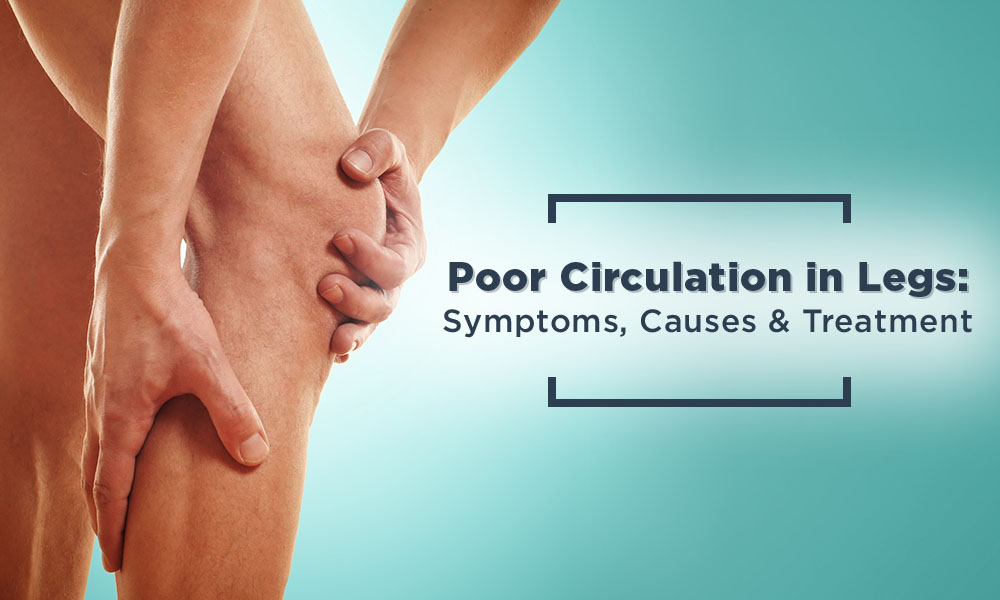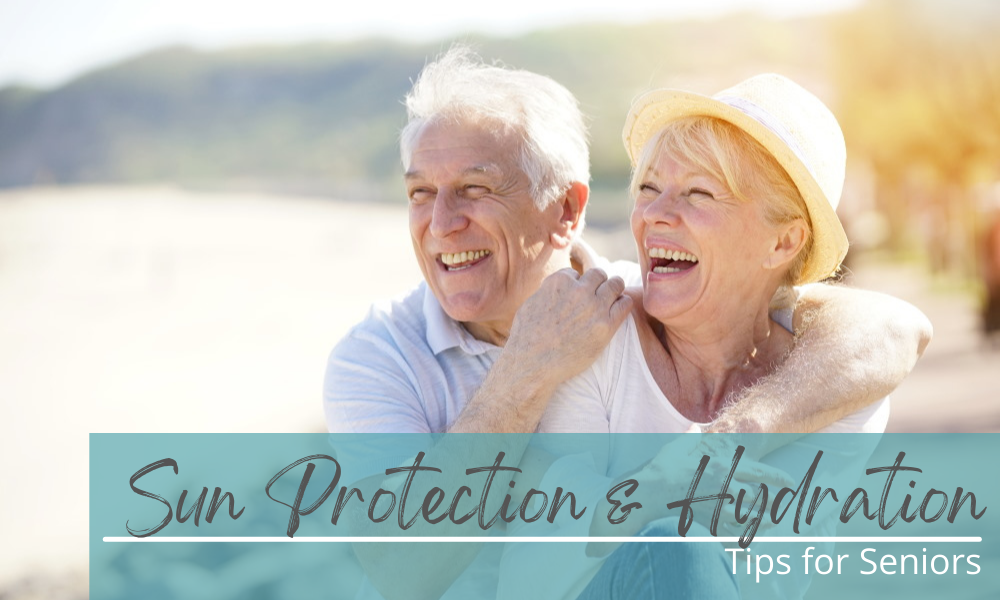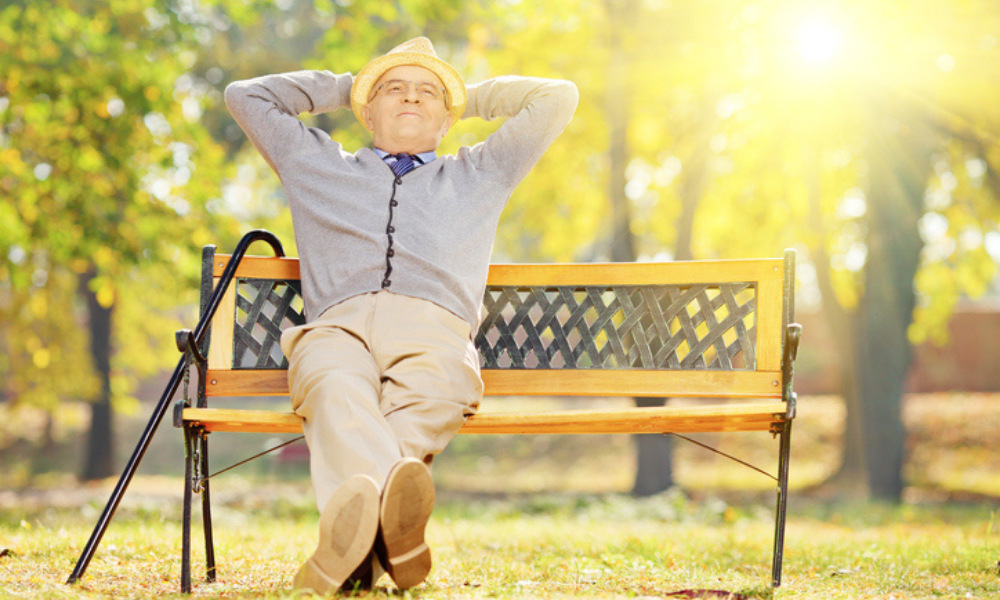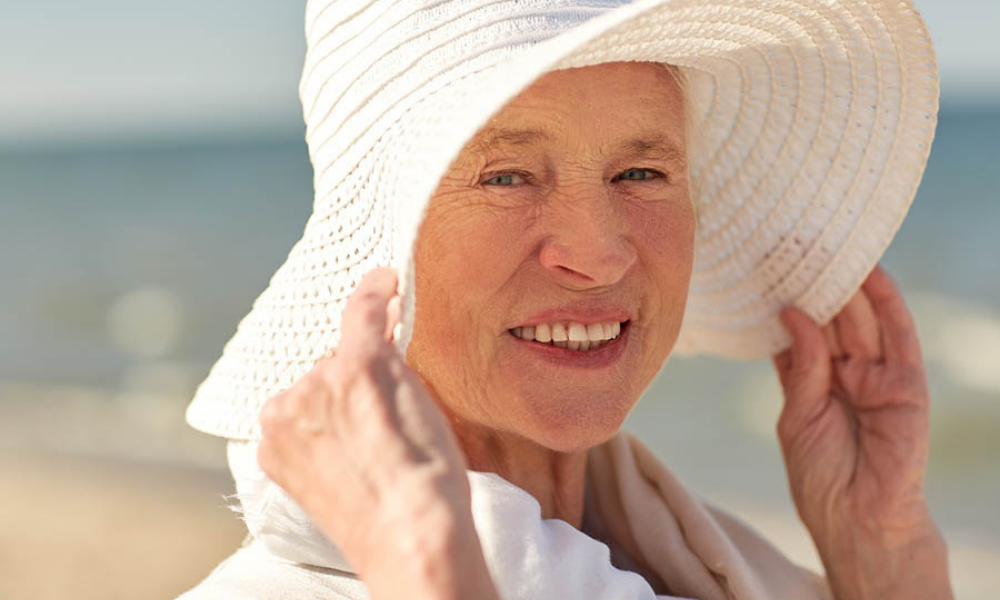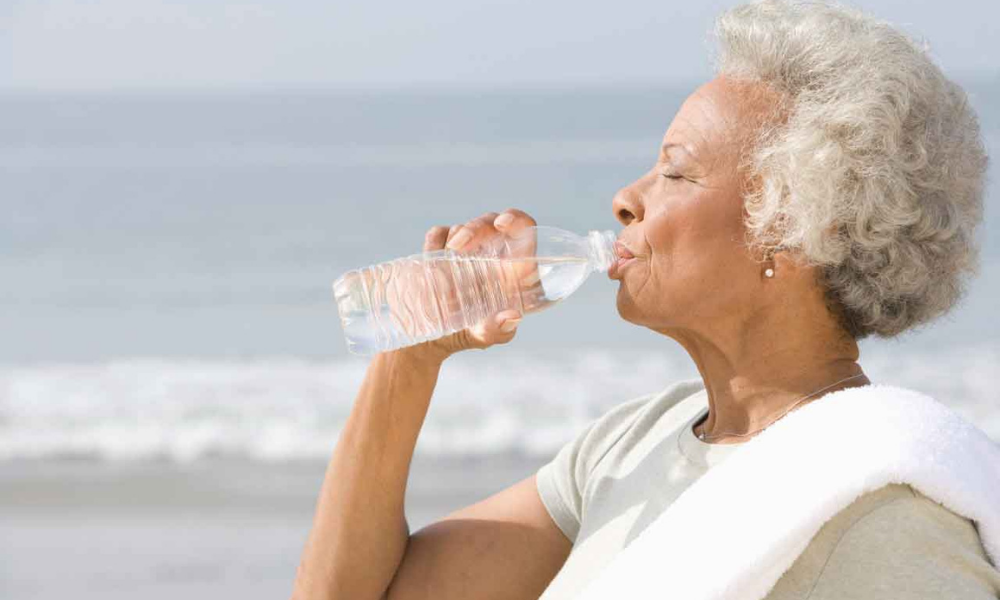- What is Poor Leg Circulation?
- Causes of Poor Circulation
- Symptoms of Poor Circulation
- Treatments for Poor Leg Circulation
The circulatory system delivers blood, oxygen, and nutrients to all cells in the body. When blood flow in your body is reduced, you may start to experience the symptoms of poor circulation in your legs and feet. These symptoms can include numbness and muscle cramping, and one of the most common areas for poor circulation is the legs. If you believe you are suffering from poor circulation symptoms, it is important to speak with your doctor and learn how to improve blood circulation.
Let’s look at the causes, symptoms, and treatments of poor leg circulation:
What is Poor Leg Circulation?
Poor leg circulation, or peripheral artery disease (PAD), is a circulatory problem in which narrowed arteries reduce blood flow to your limbs. While it commonly occurs in the legs, peripheral artery disease can also affect the peripheral arteries to the stomach, arms, and head. The arteries harden due to plaque buildup in the arteries and blood vessels, and this blocks the normal blood flow through the vessels and results in poor circulation in the legs.
While it isn’t a condition in itself, poor leg circulation may be a sign of larger health issues. If you’re experiencing the associated symptoms of poor blood circulation, it’s important to consult with your doctor, who can check for other health complications that may worsen over time. These can include obesity, diabetes, high blood pressure or cholesterol, and various heart and arterial conditions.
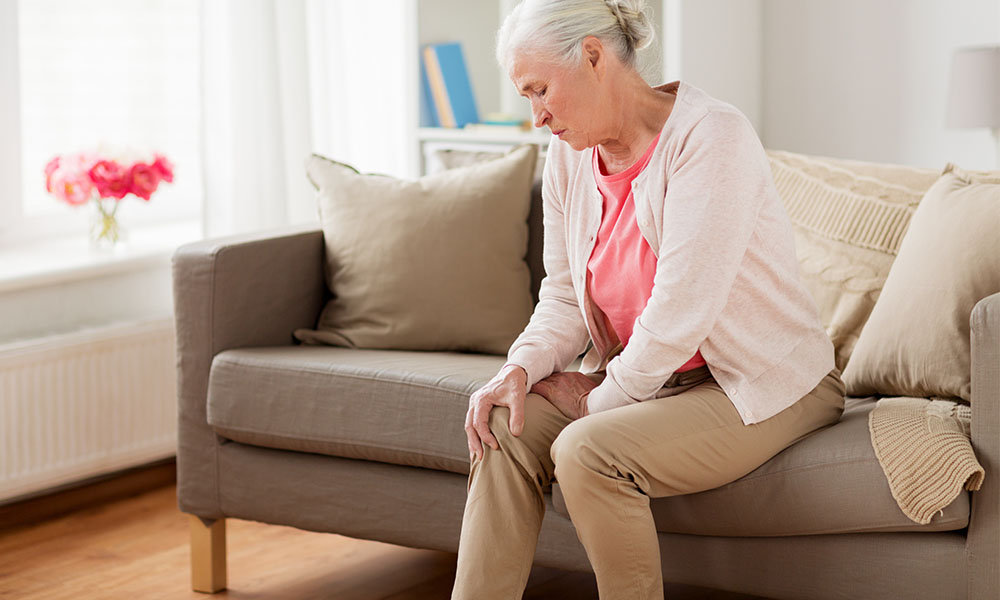 What Causes Poor Circulation in the Legs?
What Causes Poor Circulation in the Legs?
Poor leg circulation is often caused by a health condition called atherosclerosis. With atherosclerosis, fatty deposits (or plaque) build up and constrict your artery walls, reducing blood flow. It starts with damage to the endothelium, a thin layer of cells around the arteries, often caused by high blood pressure, smoking, or high cholesterol. When the endothelium is damaged, bad cholesterol enters the artery wall and leads to the formation of plaque.
As atherosclerosis progresses, plaque builds up and narrows the arteries in the legs. This limits the blood flow to your muscles.
Other factors that increase your risk for poor leg circulation include:
- Smoking
- Diabetes
- Obesity
- High blood pressure
- High cholesterol
- Increasing age, especially after age 50
- A family history of peripheral artery disease, heart disease, or stroke
- Lack of regular exercise
- Unhealthy diet
Those who smoke or have diabetes have a higher risk of poor leg circulation because of reduced blood flow.
What are the Symptoms of Poor Leg Circulation?
People with poor leg circulation may experience muscle pain and cramping in the legs. This leg pain is usually caused by physical activity, like walking, but disappears after a few minutes of rest. The location of the leg pain depends on where the narrowed artery is. It can also affect different muscle groups, such as the hip, thigh, foot, and calf.
Symptoms of poor blood circulation in legs include:
- Leg numbness or tingling
- Cramping in hip, thigh, or calf muscles after physical activity
- Discoloration in legs
- Coldness in lower leg or foot
- Sores on your toes, feet, or legs
If poor circulation in your legs continues to persist over time, you may feel leg pain even when you’re sitting or lying down.
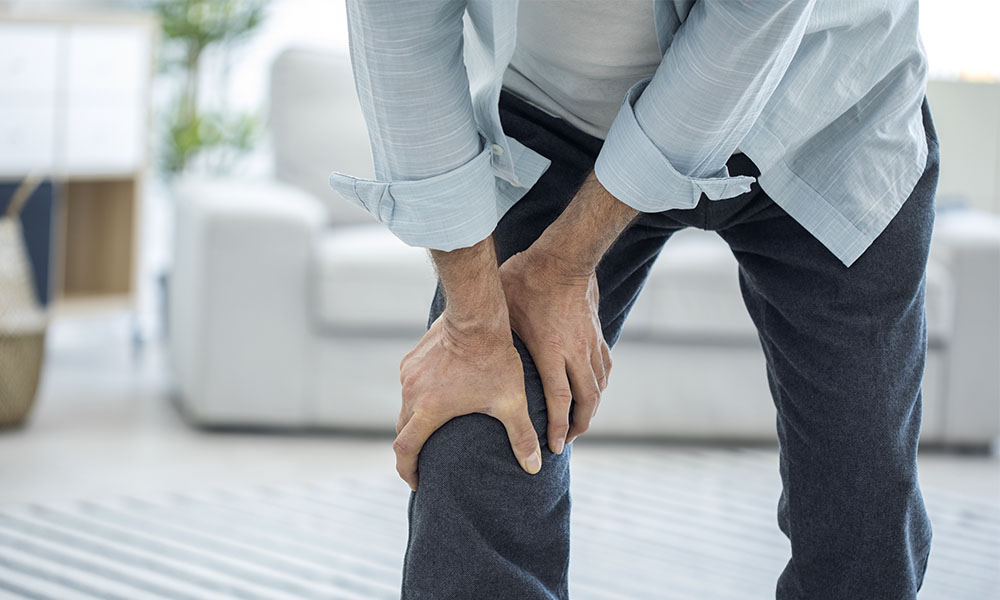 What are the Treatments for Poor Leg Circulation?
What are the Treatments for Poor Leg Circulation?
Poor leg circulation is a common problem, especially as we age. Fortunately, there are simple habits and lifestyle changes you can make to reduce pain associated with poor circulation in legs. While it’s important to consult with your doctor, here are some ways you can improve circulation in your legs at home:
Exercise Regularly
Although it can be difficult for those with poor leg circulation, exercise has been shown to improve blood flow and reduce leg pain. A lack of physical activity, especially aerobic exercise, is one of main causes of poor leg circulation.
Walking is a great exercise for poor leg circulation because it promotes the production of new blood vessels in the legs. This helps improve blood circulation and exercise tolerance. You may feel some pain and cramping in the legs at first, so start off slow by walking for 30 minutes three to five times a week. Then, gradually increase the duration to 60 minutes. As you adjust to walking regularly, you’ll see improved circulation in the legs and increased blood flow the rest of your body.
Resistance training is another good way to improve blood circulation in your legs. It increases muscle strength by making your muscles work against weights or force. This can help reduce muscle pain and cramping from poor leg circulation. Examples of exercises include leg extensions, hamstring curls, leg press, and squats. Similar to walking, it’s important to start off slowly and then gradually increase your repetitions as you get used to regular training.
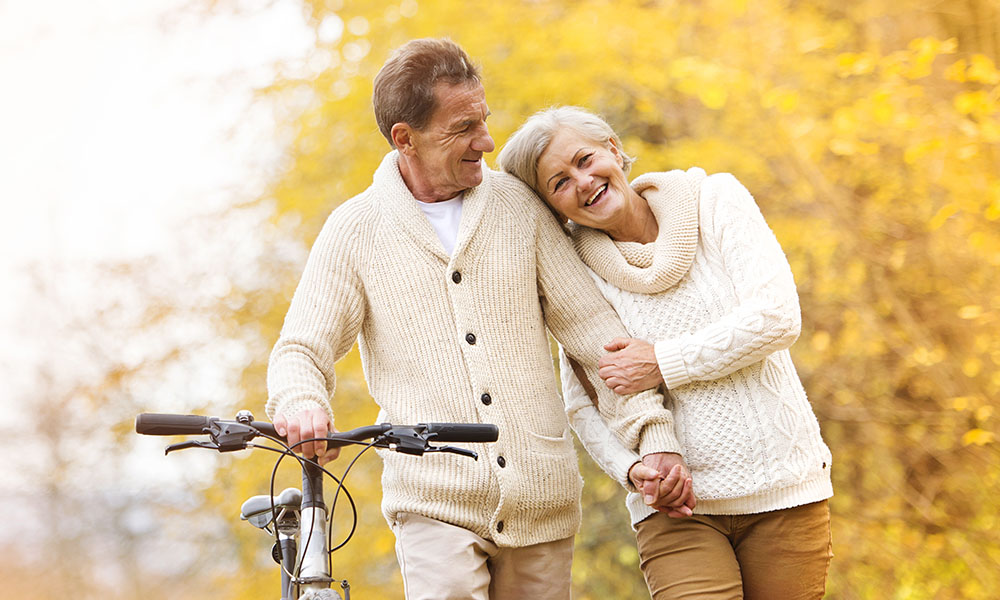 Eat Healthier
Eat Healthier
A healthy, well-balanced diet is an important part of preventing plaque buildup in your arteries. Eating healthfully can reduce your risk of high blood pressure, obesity, and high cholesterol, which can all contribute to poor leg circulation and other serious health issues. Include more antioxidants and omega-3 fatty acids in your diet, and less sodium. Other ideas to incorporate include:
- Whole grains: great source of fiber, and can decrease cholesterol levels and improve circulation
- Fish: contain omega-3 fatty acids, which help decrease blood clot formation, cholesterol levels, and plaque buildup
- Garlic: decreases cholesterol buildup in the arteries of the legs
- Citrus fruits: high in vitamin C, which strengthens capillary walls and prevents plaque buildup
- Cayenne pepper: increases metabolic rate and strengthens arteries and blood vessels
Use Hydrotherapy
Hydrotherapy uses water to treat various health problems, including poor leg circulation. With hydrotherapy, the body is exposed to alternating hot and cold water. The body reacts to hot and cold water by expanding and constricting the arteries and veins. This promotes increased blood flow and circulation, and reduced sensitivity to pain.
Practice hydrotherapy in your bath by relaxing in a quick, 15-minute warm bath. This will help expand your blood vessels to improve blood flow to your legs. Don’t stay in for too long to avoid overheating. Walk-in tubs are great for whole-body hydrotherapy because they offer a deep soak, maximizing the benefits of hydrotherapy. Many walk-in tubs are equipped with a whirlpool or airbath feature for a relaxing and enjoyable hydrotherapy session.
American Standard’s ComfortSeries™️ Accessible & Walk-in Tubs are equipped with RevitaJet™ Whole Body Hydrotherapy System with 44 air and water jets that are strategically placed to create the ultimate at-home hydrotherapy experience in the comfort of your bathtub. The jets can be adjusted and positioned to target any specific sore spots or wherever you feel your body most needs a massage. This at-home massage therapy can be incredibly useful for all ages, but especially seniors who have limited mobility. The ComfortSeries™️ Accessible Tub is safe and easy to get in and out of, and the jets are a therapeutic way to receive a daily massage for your whole body. The massaging jets can target the back, legs, wrist and feet, which are common pain points for people with arthritis. Whether you elevate the water temperature or stick with your usual heat, incorporating massage into your hydrotherapy session will further stimulate blood circulation in legs and feet, helping you feel refreshed and rejuvenated.
Poor leg circulation is a common occurrence, and making a few life changes can help alleviate the symptoms of poor blood circulation in your legs. If you have any concerns in regards to your blood circulation, meet with your doctor to discuss treatment. For more information about the benefits of a walk-in tub to improve leg circulation, contact American Standard Walk-In Tubs Canada today.
